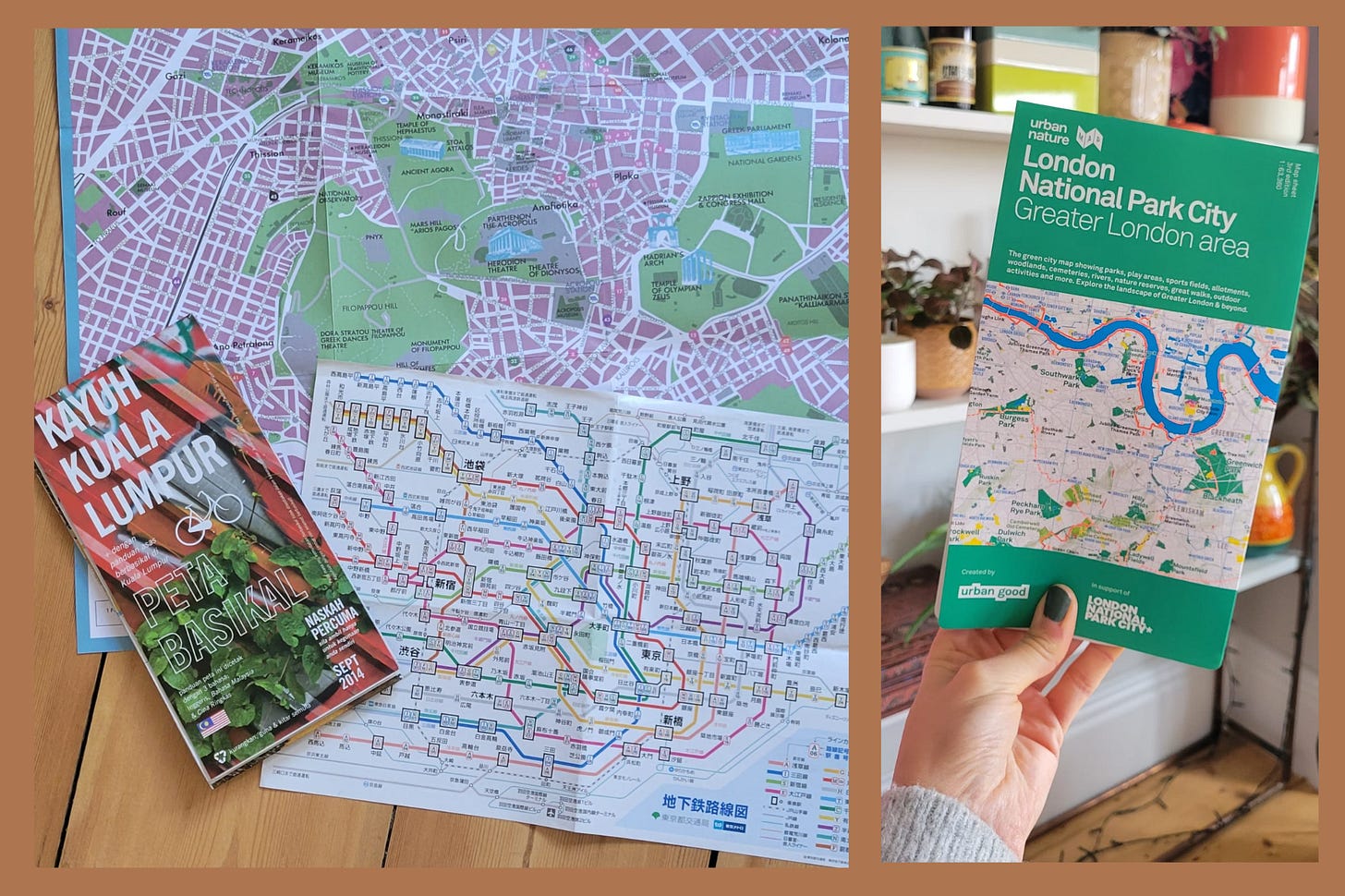Why Google Maps is the enemy
Remove the risk of getting lost, remove the reward of getting lost
As someone who loves walking and seeing where it takes me, Google Maps is my mortal enemy. Yes, it makes getting from A to B easy. But it also makes getting from A to B easy. And sometimes – especially when travelling – I want to get lost. To discover a little backstreet, stumble upon a park, gaze into lit windows at twilight and imagine living somewhere else.
I know Google Maps has made day-to-day life infinitely more convenient. I have zero nostalgia for the hours I spent flat-hunting armed only with a pocket London A-Z and a copy of Loot but, as my phone dependence deepens with every passing year (as much as I try to resist), I find myself thinking more and more about the time I arranged to meet a friend in Beijing’s Tiananmen Square in 2002 and it actually happened. No phones, no internet access. She was coming from Laos, I’d flown in from New Zealand a few days earlier.
We didn’t have Google Translate, either. Although we did have a piece of paper with the words ‘take me to the nearest McDonalds’ written in Mandarin for when the humidity became so overpowering there was nothing to do but hail a taxi and convince the driver to turn on the meter and take us to eat five-yuan ice cream cones.
Fast-forward to today and I can’t help but feel some of the magic is gone – menus magically make sense beneath the gaze of our phones and we catch cabs without having to utter a word.
In saying yes to phones, I fear we’ve said goodbye to spontaneity and now expect to have control over (and full command of) every experience and interaction along the way. And where’s the joy in that? Because travel is detours and diversions. It’s knowing treasure lies down little-trodden roads. It’s booking train tickets with only two words of the local language and lots of wild gesturing. That’s where the rewards are.
Frustratingly, I’m just as guilty as anyone else and blame my specific brand of phone dependency on my love of eating (I’ve come a long way since those McDonald’s days) because, while I welcome the risk of a wrong turn, I can’t handle the risk of making a restaurant misstep – especially when our time away revolves around a finite number of meals.
So for every place we visit, a carefully curated Google Map exists in which whole neighbourhoods are poxed with dropped pins. On a good night, we crawl from cocktails to roast pork to ice cream. On a bad night, we argue because we’ve blindly followed the dotted blue line to a restaurant that doesn’t open on Tuesdays and, because it’s taken so long for us to get there, everywhere else is full.

Let’s get back to analogue adventures. Starting with a real-life map I have to wrangle in the wind. One where the significant sites have been circled in biro and torn from a pad and I get to decide the direction of travel.
I want to smooth open a map that takes up an entire table and see a hundred potential routes to walk. To lose my bearings and have a stranger in the street point to where we are.
I want journeys that traverse a crease and a map that accompanies me through so many neighbourhoods it threatens to fall apart at the folds.
I want whole cities and whole countries at a glance, not pinched perspectives that make it impossible to see the bigger picture. I want to be introduced to different ways of navigating a place – to see London as a sea of green spaces and to entertain the idea that Kuala Lumpur can be explored by bike. I want to move around Toyko’s metro system by colours and shapes alone.
Most importantly, I want homemade maps bleached almost indecipherable by multiple photocopies. Hand-drawn directions like those that led us around the Thakhek Loop in Laos all those years ago. I want to reach waterfalls via a few almost illegible landmarks.
So here’s to less Google Maps (and phones in general) and more making it up as we go along.
Writing this made me think of the brilliant Maps by the Yeah Yeah Yeahs, although it has nothing to do with actual maps and more to do with missing someone. An emotion that has accompanied me on many a meandering walk.
Cinema or theatre? Cinema please. Except for this week when I went to see the NT Live streaming of The Motive and The Cue (written by Jack Thorne and directed by Sam Mendes). Yep, for someone who finds theatre all a bit earnest, I went to see a play about the making of theatre as Sir John Gielgud directs (and infuriates) a tantrum-prone Richard Burton in the rehearsal room ahead of the 1964 Broadway production of Hamlet. I enjoyed it, but mostly because it introduced me to Johnny Flynn who played Burton and makes great music. Like this:
Currently reading: Almost Never by Daniel Sada (translated by Katherine Silver), a satirical take on machismo in 1940s Mexico. It’s quirky with an experimental writing style and is almost solely populated by a cast of outlandish women, apart from the sex-obsessed protagonist Demetrio, whose misguided pomp and self-assurance put me in mind of A Confederacy of Dunces by John Kennedy Toole and The Chilli Bean Paste Gang by Yan Ge (translated by Nicky Harman). It’s about social class and status, solitude and the state of the country’s infrastructure but, mostly, it’s about man’s desire for sex at any cost.


